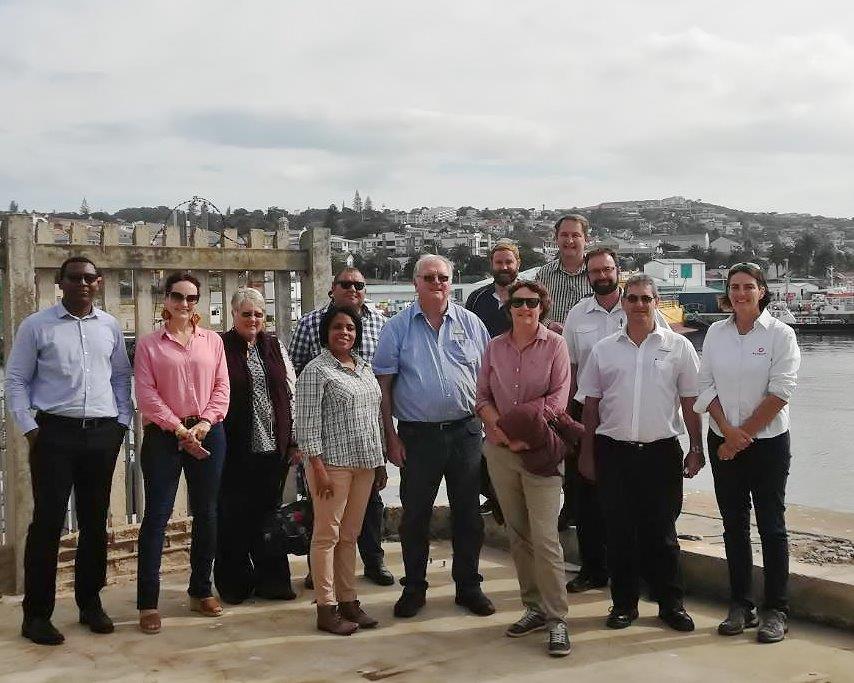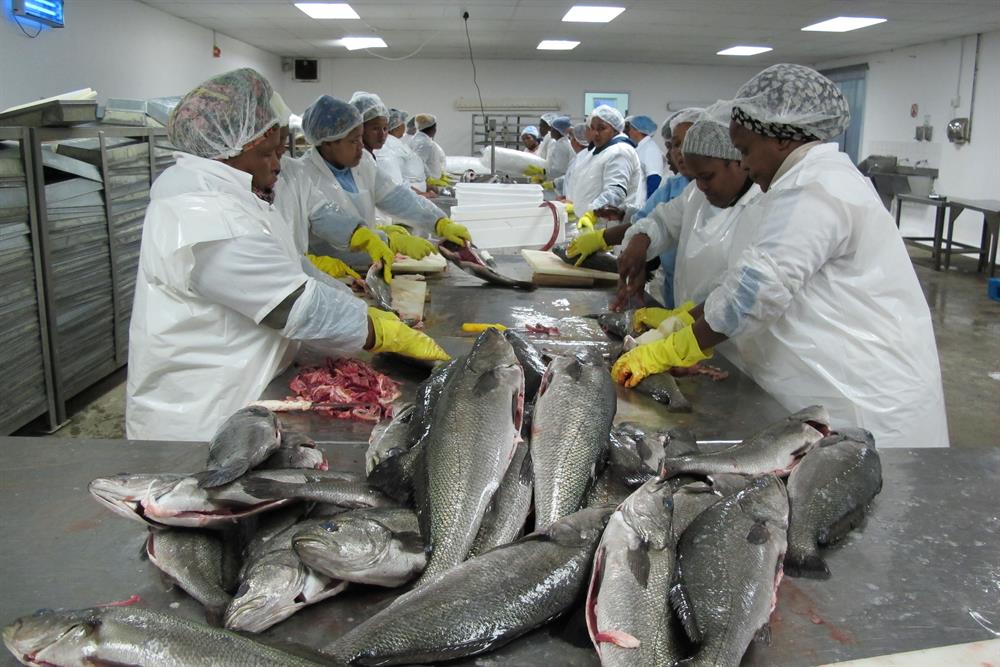MOSSEL BAY NEWS - Mossel Bay is regarded as the site in South Africa best suited for marine finfish aquaculture. Simply put, farming fish, particularly yellowtail, may be the impetus the local economy needs to provide job opportunities and better living conditions for a community that has for ages been dependent upon the sea for survival.
At the Marine Aquaculture Development workshop hosted by the Mossel Bay Municipality, numerous stakeholders in the industry met the Mossel Bay municipal executive to discuss various options available to establish marine finfish sea cage aquaculture in the bay.
The municipal manager, Adv Thys Giliomee made it clear the municipality merely acted as a facilitator and in the interest of local economic development when it invited stakeholders from a broad spectrum to the workshop.
Yellowtail
The stakeholders decided to work towards the establishment of a profitable yellowtail sea cage farming industry in Mossel Bay, with international recognition for product quality and technical innovation in a manner consistent with the principles of ecologically and socially sustainable development.
A project team was proposed to comprise business, industry and municipal leaders who will drive the process.
The executive mayor, Alderman Harry Levendal, reminded the delegates that previous initiatives in this regard were scuppered because of fear of visual pollution. Since then, technological advances have negated this fear substantially.

Several local stakeholders toured the Mossel Bay harbour to assess facilities for the possible establishment of a marine finfish sea cage farm.
We need jobs
"We need to investigate all possible avenues to rescue our dwindling economy. We have a panel of the best experts available. I urge you, stand up and make the decision. We have to create jobs. We cannot, we dare not, wait," the mayor said.
With technological advancements and developments within the industry, especially with many case studies having been successfully completed by the University of Stellenbosch, the viability certainly seems promising, especially as hundreds of jobs across the spectrum may eventually be created in an already deflated economy.
This initiative neatly ties in with the national government's Operation Phakisa, that states that while aquaculture contributes to almost half of the global fish supply, it contributes less than 1% of South Africa's fish supply. The sector offers significant potential for rural development, especially for marginalised coastal communities.
Apart from Mossel Bay, only Richard's Bay is regarded as suitable for fish farming, however, the latter is at best suitable for boutique style farming.
An 8 000 ton-producing salmon farm owned and operated by Lerøy Seafood in Norway. The farm uses eight 160m circumference cages on a four-hectare site, each cage holding up to 1 000 ton of salmon. The site is about 300m offshore (by contrast it is likely all the farm production sites at Mossel Bay will be at least 2km offshore). The structure to the left is a feed barge. Photo: Gert le Roux
Sea cage technologies
The sea cage technologies have been extensively tested and are widely used and proven in many countries in the world.
It is proposed that in Mossel Bay an area of 200 hectares, approximately 2.5 km offshore, be considered for a pilot project.
The use of cages, between 50 and 160 metres in circumference, has been proven effective in South Africa at pilot projects since 2008. The cages are durable and can handle up to 1 000 tons of fish in a single cage - and up to 10 000 tons per site at a relatively low cost, depending on the depth. They are known for a high level of automation.
"The modern fish farm is said to be an intensive knowledge-based enterprise operating within strict standards and best management practice frameworks," Gert le Roux of Stellenbosch University said. He is currently the programme coordinator of the DST Aquaculture Programme and does consulting work with Agrifusion.
He added that farmed fish was the most resource efficient protein on the planet.
A Stellenbosch University farm attendant feeding dusky kob in one of four 50m circumference Fusion Marine surface gravity type cages used in the port of Richards Bay during the DST KZN Aquaculture Demonstration Project undertaken by the Department of Science and Technology and Stellenbosch University between 2015 and 2017. Photo: Gert le Roux
Processing opportunities
Le Roux said for Mossel Bay's sea conditions, yellowtail should be considered because the species prefer water temperatures of between 22 and 25 degrees Celcius and grows faster than dusky kob at lower temperatures.
It offers good product versatility and high quality product, sold at a premium when gilled and gutted. This in itself provides opportunities as the finfish will also have to be processed.
"The whitefish market, especially with yellowtail, has good export potential, with the current wild capture price and possible farm gate price beginning to align.
"The marine finfish aquaculture sector has to target the white table cloth restaurants, catering for the eight to 10 Living Standards Measure (LSM) income," Le Roux said.
To feasibly farm marine finfish in cages, a production of 3 000 tonnes is envisaged. Le Roux added that there may even be synergies with the existing initiative to establish an abalone farm at Gouritzmond.
Furthermore, he said the macro-environment for the development of aquaculture had never been better in South Africa. In Mossel Bay, infrastructure, also on the harbour, may already be available. In addition, there exists significant private sector interest, although new environmental authorisation will have to be obtained.
Primary processing of some of the dusky kob produced during a project undertaken by the Department of Science and Technology and Stellenbosch University at Richards Bay.Photo: Gert le Roux
Environmental authorisation
In 2010 I&J obtained environmental authorisation but terminated its marine finfish aquaculture programme and closed its fish processing facility in Mossel Bay in 2011 after the municipality withdrew its support.
"As technology and methodology have changed, many of the concerns raised by locals at the time no longer should be of concern. The cages should hardly be visible from land. At best a few fishing vessels should be noticeable."
It was mentioned that Mossel Bay may need a Phakisa plan to take the process further, but that several entities would be able to assist in this regard. An expression of interest should also be directed to the minister of Agriculture, Forestry and Fisheries to investigate the development of an aquaculture development zone.
'We bring you the latest Mossel Bay, Garden Route news'


















